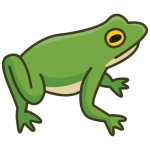
Hytuna goes for sustainability!
The Netherlands is also called the Nile Delta of Europe. The land where we grow our flower bulbs is one of the most fertile in the world. We have borrowed this land from the Earth, and we see it as our duty to pass our land on to the next generation in a healthy state.
Play the video!
Healthy soil life
When the soil on our land is cultivated, a large flock of seagulls follows the tractor, feasting on the abundance of worms that enrich the soil. This is a good indication that the soil life is healthy
Good water quality
The water in our ditches is clear and full of life, such as beetles, fish and frogs. When our children sometimes go out to catch tadpoles with a landing net in ditches between the bulb fields, they also sometimes come home with salamanders. This means that the water is of good quality.

Biodiversity
We have nothing to complain about biodiversity on land. There are many (meadow) birds on the land. Lapwings, oystercatchers, wagtails, larks and partridges are examples that you will often encounter when you are working on our land. If you are lucky you will also be able to distinguish the spoonbill from the egret. Because the harvest only takes place in summer, birds can safely and peacefully hatch their eggs among the bulbous plants in spring. Once hatched, the chicks must quickly learn to fly, or else there’s a chance the fox or the stoat will catch them, as they do fancy them


Crop protection
To protect the crops against diseases and pests, we use (as little as possible) crop protection agents. We ensure that the resources we use are not harmful to people and the environment. To be sure of this, we participated in research by the RIVM, the OBO study. (Research on Exposure to Local Residents) In this study, the RIVM has placed measuring equipment at various locations among our bulb fields. Measurement equipment has also been placed in gardens and houses of adjacent private individuals, and the RIVM has taken soil and dust samples. The results of the sample analyzes were all within the strictest standards. Part of this research also included a population study to see if certain diseases might occur more frequently in our area than elsewhere in the country Good to know that this was not the case. This research revealed that people in our area are, on average, actually slightly healthier and visit the doctor less frequently than elsewhere in the country.


Fertile and valuable soil.
We think carefully about the use of fertilizer. Every year we invest in having soil and leaf samples taken. This allows us to see exactly which substances are present in too little or too much. Supplementing substances that are deficient requires a lot of customization, as each bulbous plant and plot has different needs. We do this through specially formulated fertilizers that precisely meet the needs of plants and soil. Excessive fertilization can cause leaching. We check this by regularly measuring the water in the ditch. We have a measuring point at the inlet of our water system and a measuring point at the outlet of our water system. By comparing these with each other we can see whether the values have become higher, the same or lower. We measure for four substances in the water samples, namely; nitrogen, ammonium, phosphate and EC. The results are immediately stored digitally. This way we can ensure that we remain within the strictest standards.


